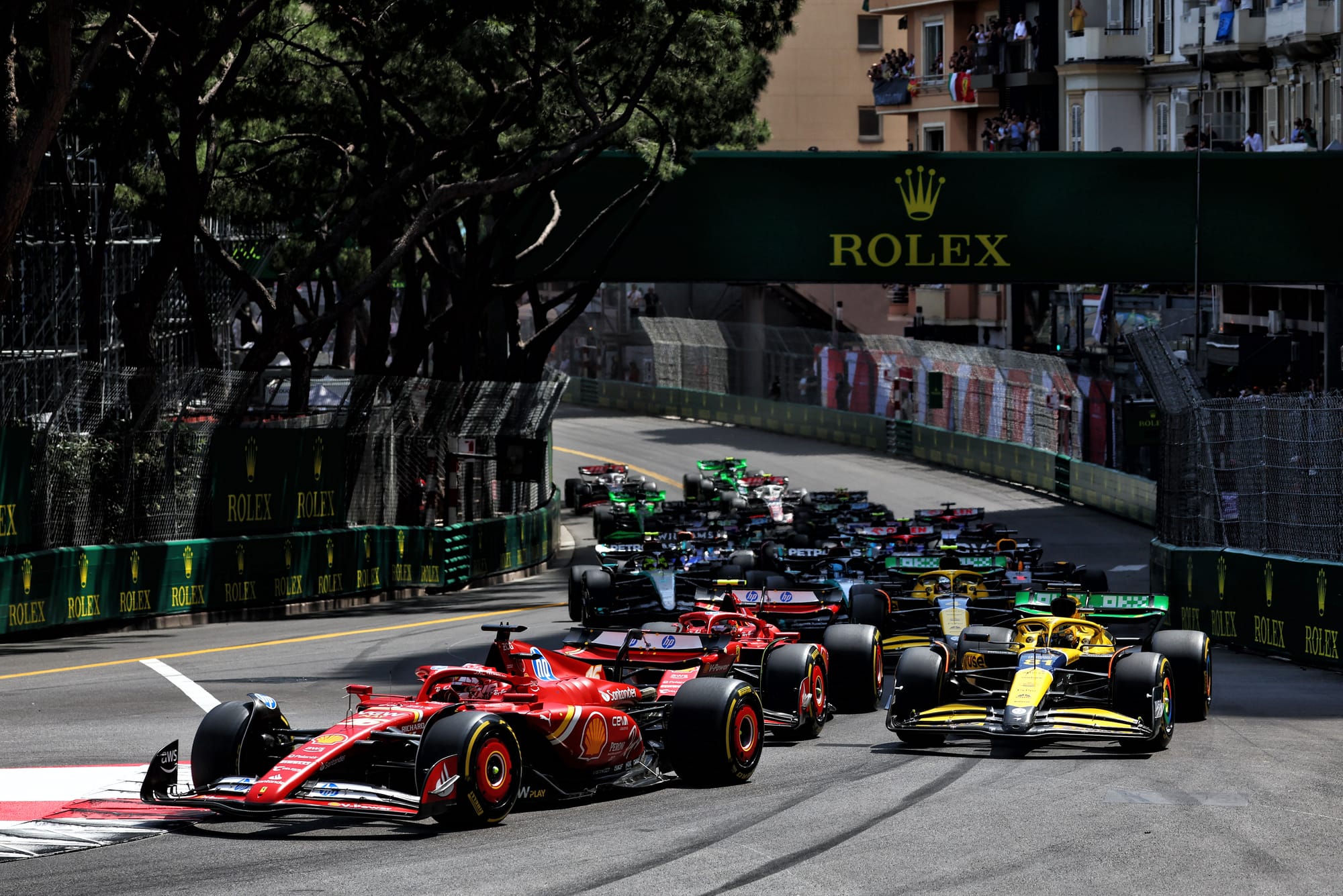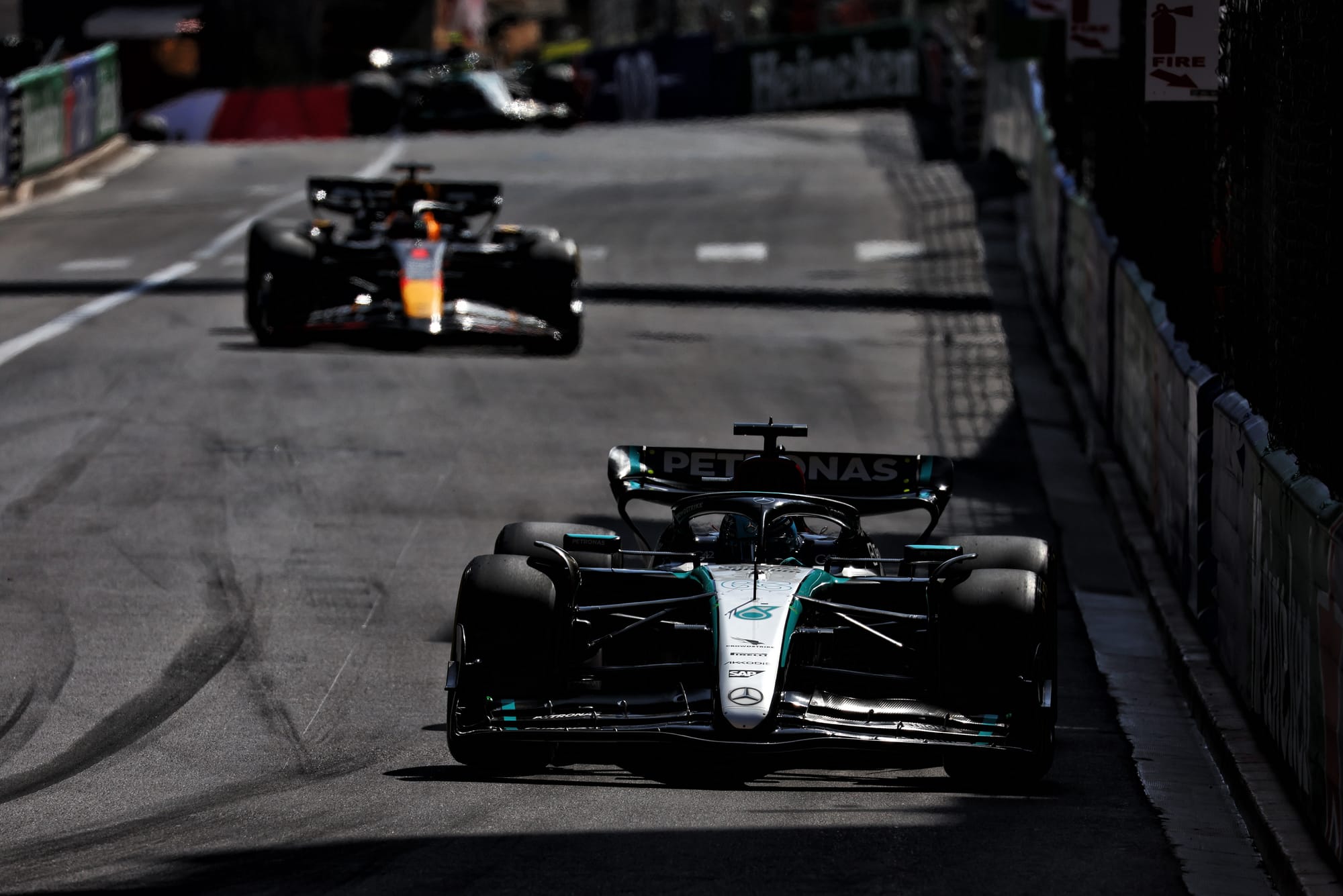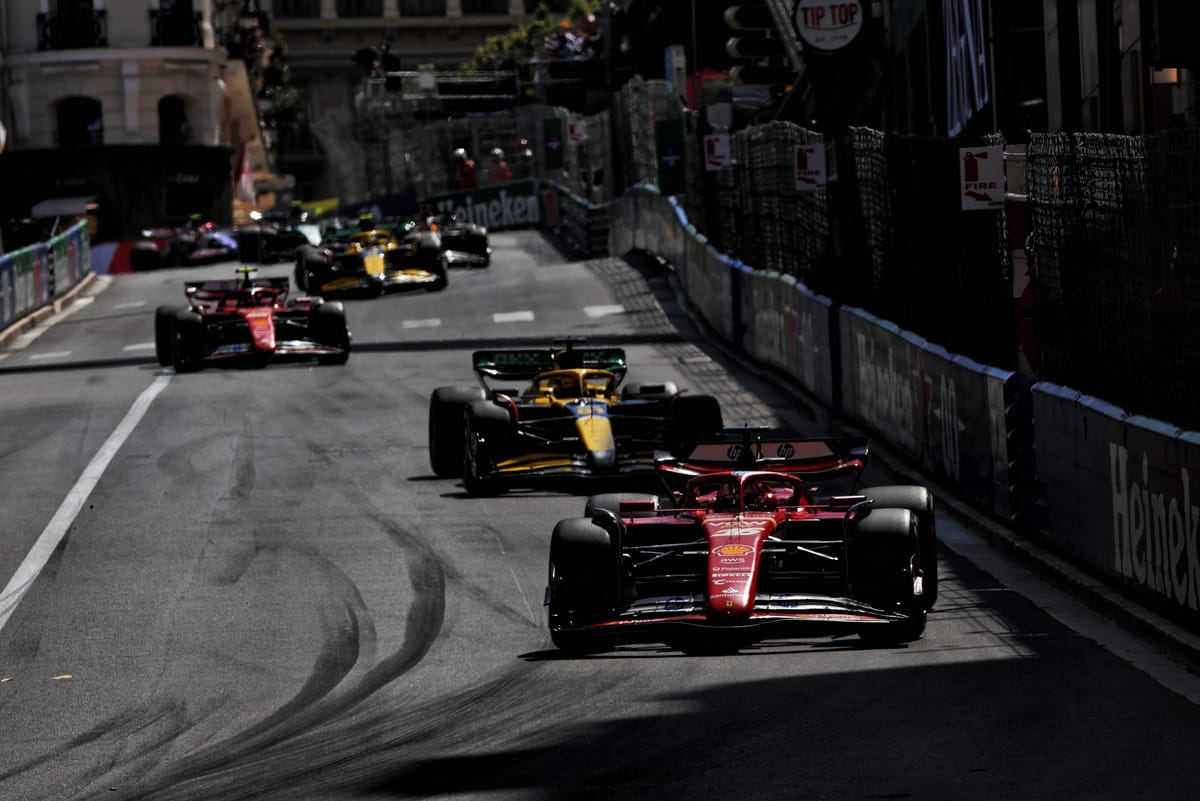Kevin Magnussen shouldn’t have kept his foot in as he raced partly alongside Sergio Perez up the hill on the opening lap of the Monaco Grand Prix at a point where the track narrows.
By the same token Perez, having looked right and seen the Haas, probably should have judged the gap Magnussen would need better than he did.
The enormous accident which ensued and the red flag it brought fundamentally changed the complexion of the race.
But it almost certainly didn’t change the identity of the winner, as Charles Leclerc and Ferrari were in their own special rhythm all weekend.
Without Carlos Sainz – who would have been a retirement without the red flag – there maybe McLaren could have used its two-against-one dynamic to pincer Leclerc strategically.
But would it have had the tyre degradation to have done so if the race had run at a harder pace than the very pedestrian one it ran at once everyone knew they were trying to do the distance without a pitstop? Maybe.
A more realistic what-if way of Leclerc not winning this race would have been if Oscar Piastri had put all his best sectors together in Q3 – because that would have put him on pole a few hundredths of a second ahead of Leclerc rather than alongside him on the front row.
Piastri was almost as impressive in his barrier-shaving fluidity and consistency as Leclerc this weekend. The McLaren now seems to work everywhere, no longer with the slow corner limitation it suffered last year.
It was vitally important Piastri didn’t lose second place to Sainz at the start – because then Ferrari could have used Sainz to back up the field to ease Leclerc’s task. So Piastri was taking no prisoners into the first corner, even against Sainz on a mission.
The grippier side of the grid got Sainz marginally ahead on the inside as they raced up to Ste Devote two-abreast behind Leclerc. Piastri stuck it out around the outside, pinning the Ferrari in and as Sainz stayed committed the McLaren’s floor edge punctured the Ferrari’s left-front tyre.

With Sainz then unable to turn right for Casino Square, he pulled to the run-off, his race apparently run. The two McLarens against Leclerc dynamic was in place only for a few seconds though, as a red flag for the Perez/Haas team accident behind gave Sainz and Ferrari a reprieve.
The red flag didn’t come out fast enough to prevent another accident – an all-Alpine one as Esteban Ocon tried an unfeasible move on team-mate Pierre Gasly into Portier.
Because the field had all passed the safety car 1 line, the race was deemed to have started. Therefore the restart was part of the same race and with everyone free (indeed almost obliged) to change to a different tyre compound, it was potentially a zero-stop race. One without Perez, the two Haas cars or Ocon’s Alpine, with the grid lined-up in the order it had passed the SC1 line.
Sainz didn’t get away as well second time around and the Leclerc-Piastri-Sainz-Lando Norris (all of them now on hards, having originally chosen mediums) group led the medium-tyred trio of George Russell/Max Verstappen/Lewis Hamilton.
That order and with those tyre choices put the race into a strategic stalemate. Ferrari’s task was to ensure that the McLarens did not have a gap to drop into later in the race which would allow them to make a stop and come back at them on fresh tyres. That gap was to Russell, as the leader of the next bunch.

But Mercedes, having been obliged (like Red Bull with Verstappen) to take the restart on mediums which were only thought good for about 50 laps, was running Russell’s race deliberately very slowly so as to extend that 50 laps to the 77-lap race distance. Which then obliged Ferrari to severely restrict Leclerc’s pace, preventing that 20s pitstop loss gap to him from opening up. Piastri had lost around 20 points of downforce from his floor damage but such was the slow pace of the race that hardly mattered.
So around they ran, sometimes not even at a good F2 pace, around this track on which overtaking is so unfeasible. Every time the gap between Piastri and Russell approached the danger point which would have allowed Oscar to pit and rejoin in clear air, so Ferrari instructed Leclerc to slow. It would ebb and flow like this for most of the afternoon, the tension building, waiting for something to break up the stasis as round they went Leclerc-Piastri-Sainz-Norris, nose-to-tail, almost tripping over themselves at the hairpin.
A break-out threatened in the form of Hamilton. Once he had more than a pitstop’s-worth of gap over the train comprising Yuki Tsunoda/Alex Albon/Pierre Gasly behind, he was free for Mercedes to attempt an undercut on Verstappen. He pitted on lap 51. Red Bull duly responded on the next lap and it was a surprise that Verstappen rejoined still ahead of the Mercedes. “Why didn’t you tell me the out-lap was critical?” asked Hamilton.
The team had believed he didn’t need to risk tyre-damaging out-lap pace and that he’d still come out ahead. That was a misjudgement, because Verstappen had more in-lap pace than expected, simply because he had so much tyre life left, having run at such a slow, Russell-dictated, pace.
That of course left Verstappen, on a fresh set of hards, with only 25 laps to go, free to charge after Russell. Russell, having run between 3-5s slower than he’d been capable of going, still had plenty of tyre life with which to respond and so as he stepped up the pace, that gap ahead of him to the lead four closed up. Like that, any feasibility of McLaren igniting the race by pulling the pit stop plug, getting either Piastri or Norris onto new tyres fast enough to overtake Sainz and challenge Leclerc, was gone.
With that, Leclerc was finally let off the leash and he scorched off into his Monaco rhythm as Piastri fended off Sainz to the end, with Norris in turn nibbling at Sainz, just as he had all afternoon.
So we had the fairy story of the Monegasque winning at Monaco, the feel-good development of this maybe not being a one-dimensional Red Bull season, but the outcome was more exciting than how it came to be.

